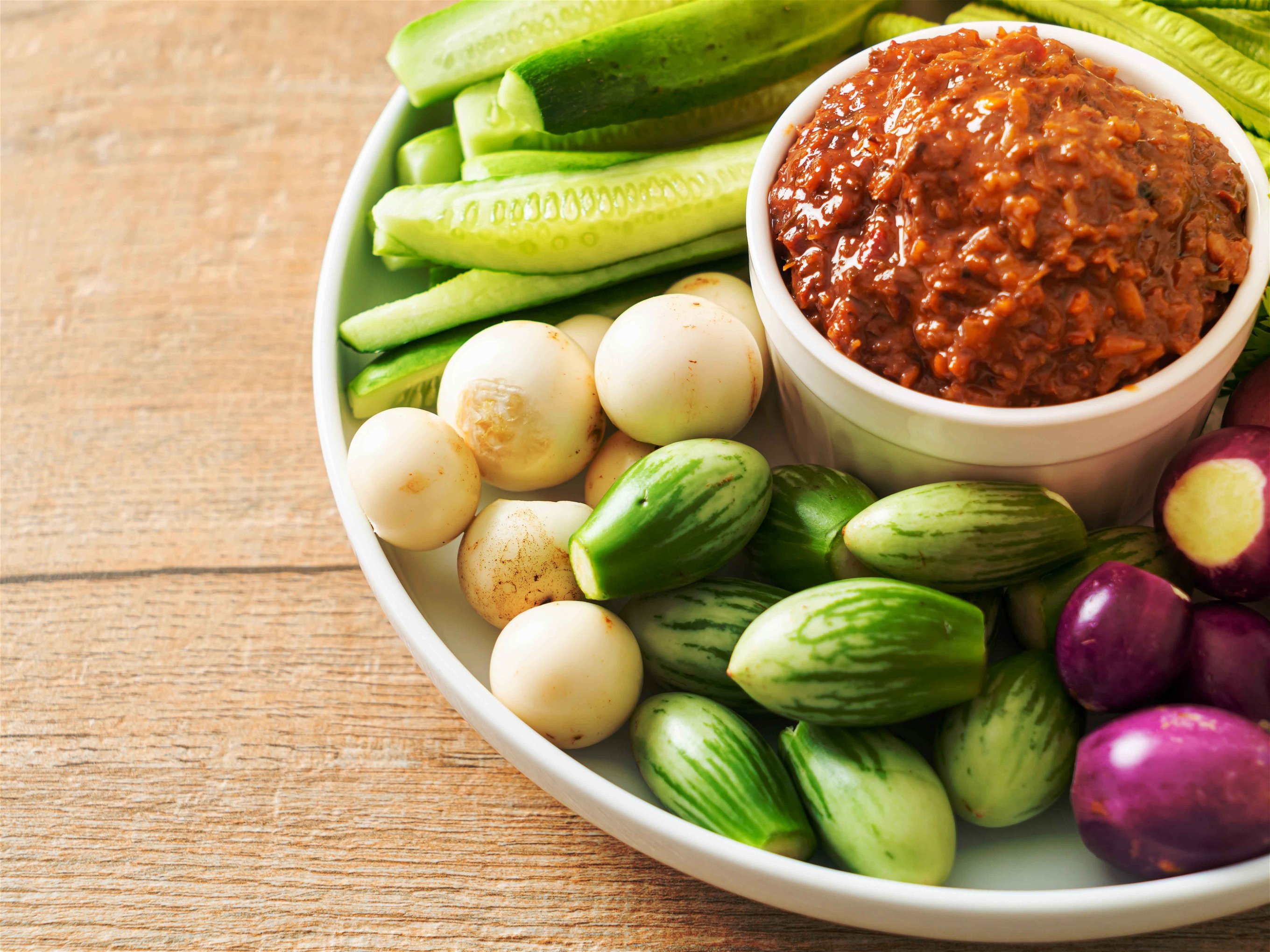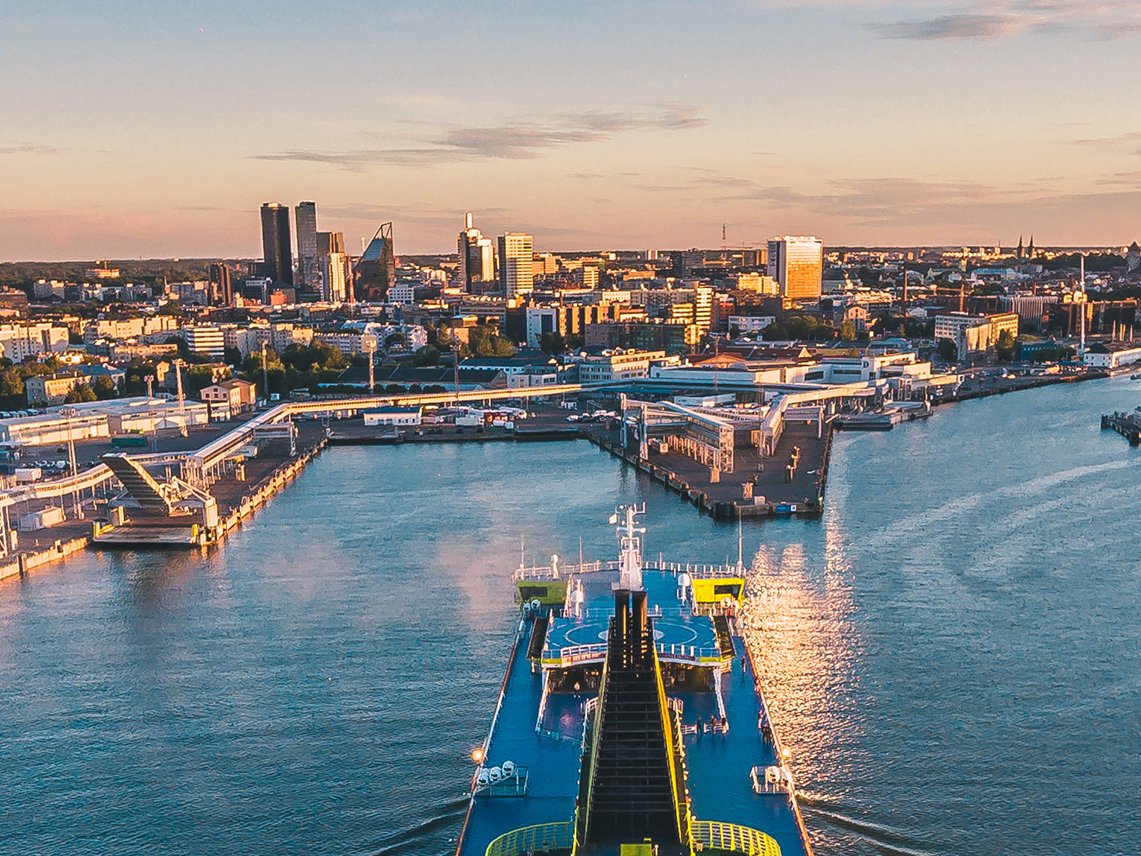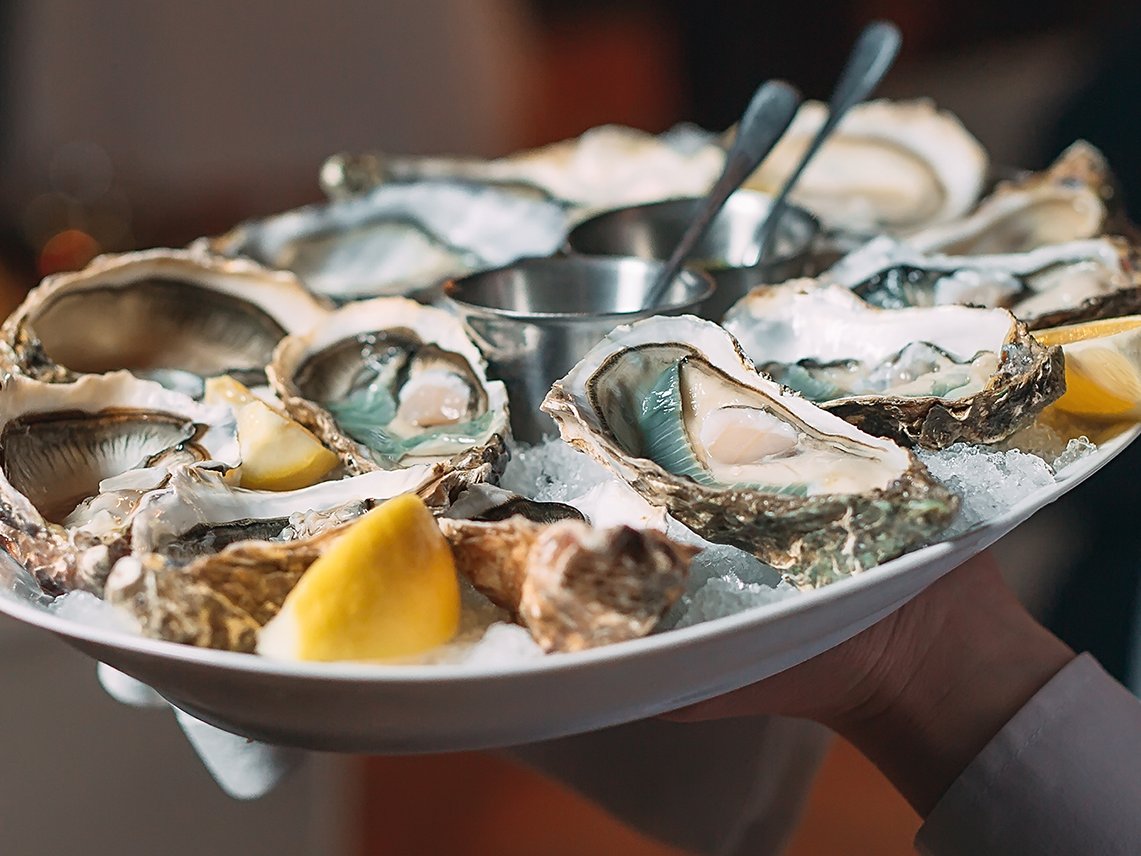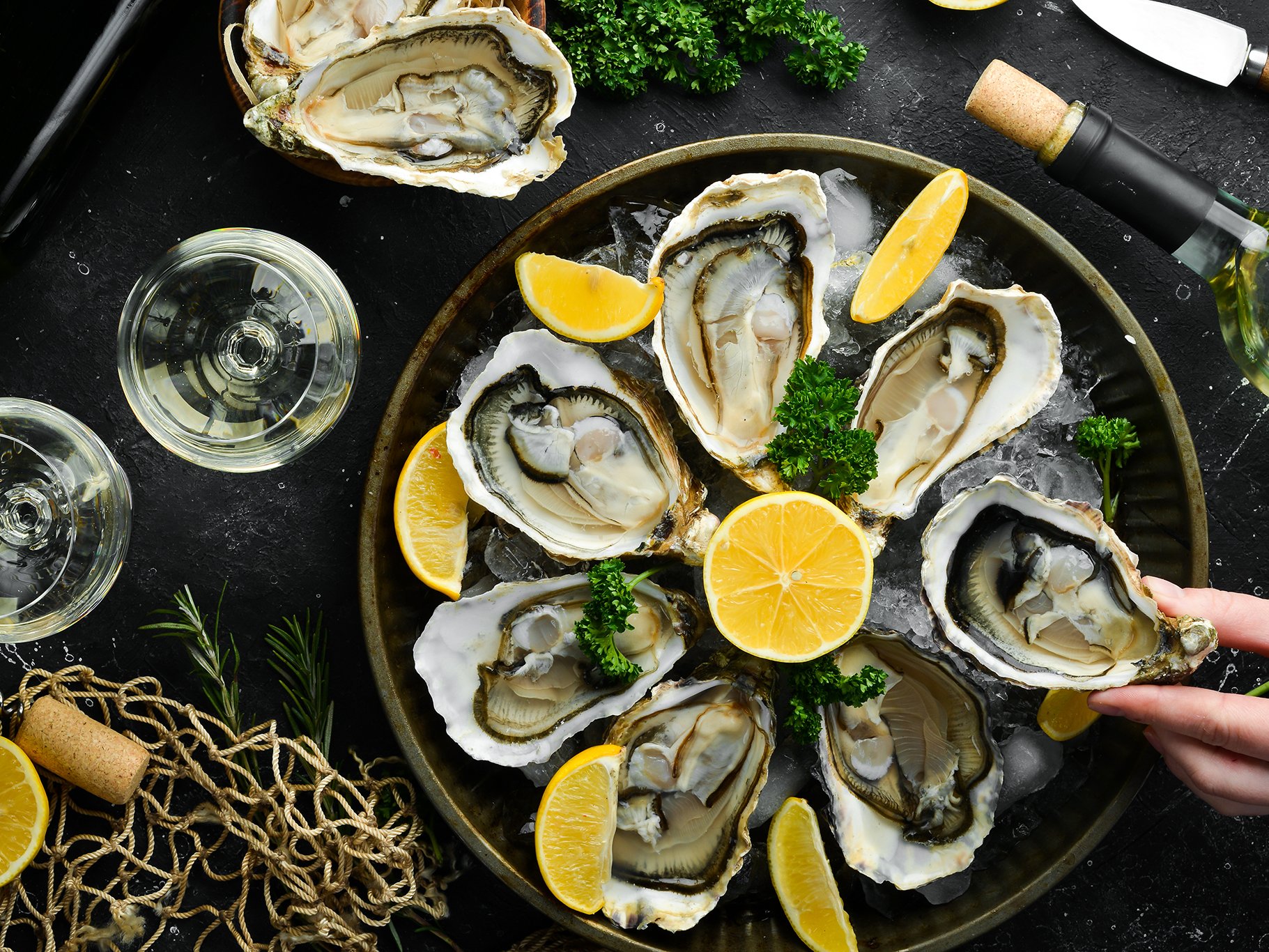Oysters: Comeback of the Super Shellfish
New York was once the oyster capital of the world, but pollution and overfishing caused them to become extinct. Now oysters are making a comeback.
A billion oysters
Centuries ago the bay of New York was a paradise for oysters, in fact New York was once the oyster capital of the world harbouring around 50% of the world's oysters. Then came settlement, the city grew, the harbour expanded and the oyster reefs were decimated. Now they are being returned to the waters around this metropolis of millions.
An initiative called the Billion Oyster Project is reintroducing oyster reefs to not only improve the water quality but also to protect the coast from storms and erosion. The fact that wild oysters are thriving again is a sure sign that the water quality in America's third busiest port is finally improving.
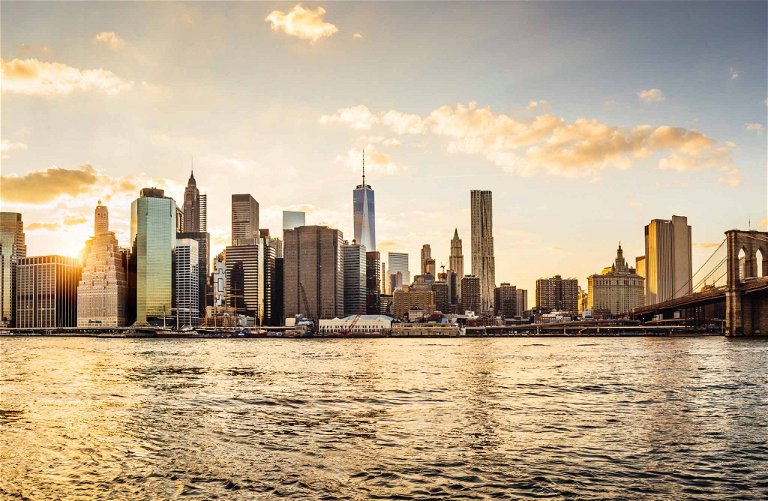
An island with history
Fog as thick as pea soup envelops downtown Manhattan. It is one of those days when the Statue of Liberty seems to have disappeared from the scene and the Brooklyn Bridge is only dimly silhouetted against the water. Every few minutes the foghorns of the passing ships hoot; deep, drawn-out, slow.
The Coursen is the ferry from the southern tip of Manhattan to Governors Island, a 70-hectare island opposite the Statue of Liberty. Governors Island was once a fishing spot for the indigenous natives, later it became an army and navy base, today it is a popular recreational area. Thousands of New Yorkers come every weekend to go cycling or picnicking and, since 2014, to volunteer at the Billion Oyster Project; a non-profit project aiming to breed and settle one billion oysters here by 2035.
Mountains of oyster shells pile up behind the historic officers' buildings, these come from the many seafood restaurants in the city. Oyster larvae are bred in them and then released into the harbour basin to replenish the stocks.
"We want to restore the original landscape that was once found in New York harbour and teach people about sustainability and environmental protection," explains Pete Malinowski, executive director of the Billion Oyster Project, "because huge oyster reefs that developed over thousands of years once protected the coast of New York." It is hard to imagine today, but the oysters of the 17th century were over a foot long and grew in rock-like clumps 10-16 strong. Indeed Ellis Island and Liberty Island (where the Statue of Liberty now stands) were once called Little Oyster Island and Greater Oyster Island.
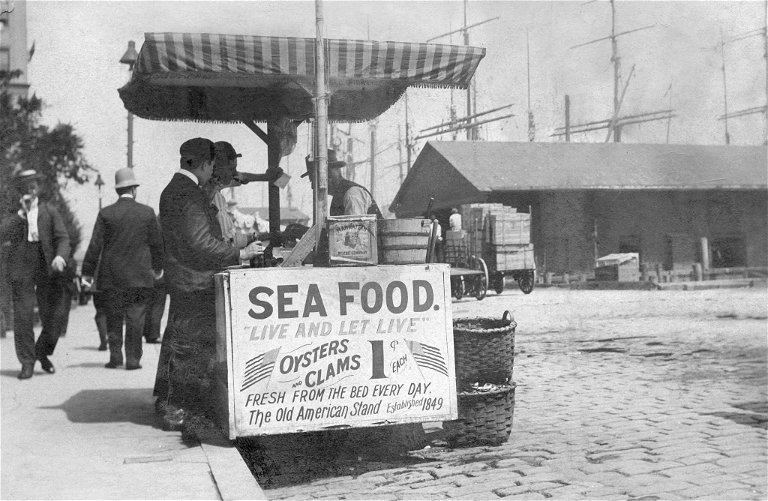
Gigantic oyster beds
In the fertile water mix of the Hudson River and the Atlantic Ocean, there have always been enormous oyster beds. New York harbour was one of the most biologically productive, diverse and dynamic underwater worlds on the East Coast of America. There were so many oysters here that a street in the Financial District at the southern tip of Manhattan was even named after them: Pearl Street.
Back then, this modern-day luxury was not exclusively enjoyed by the wealthy, oysters were food for the poor. So plentiful were they that street vendors grilled oysters on every corner where hot dogs might be offered today. Millions were exported. Despite being offered protection in 1715 with a law controlling harvest dates, the act was repealed in 1807. The Victorian sewage system which dumped raw sewage into New York harbour was the last straw. Throughout the 20th century Manhattan grew in width and in height; swampy, stony shores that were once an ideal home for oysters had given way to the bulkheads and piers of an ever expanding city. The oysters had lost their habitat and their water was polluted.
This scenario was by no means unique to New York, natural oyster populations have shrunk dramatically in many places around the world. Yet oysters are the water engineers of the ecosystem. An average adult oyster filters and cleans around 200 litres of water per day (for comparison a bathtub holds about 150 to 180 litres). Oysters are the kidneys of the sea, removing toxins, pollutants and pathogens. As the water becomes clearer, so more light falls to the seabed and a greater abundance of wildlife will thrive.
Thanks to new laws to improve water quality, the harbour water in New York has gradually become cleaner in recent decades. At least to the extent that farmed oysters can be released and survive. This is the cornerstone of the Billion Oyster Project.
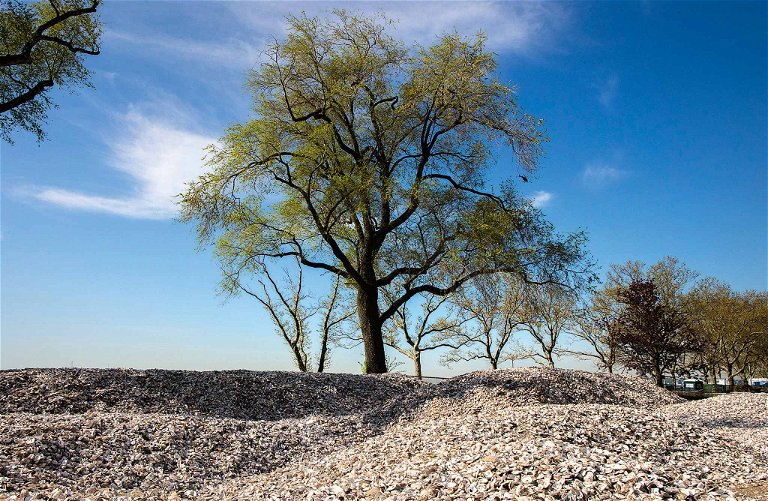
Gourmets as allies
The shells for the baby oysters are supplied by New York restaurants. "Before the pandemic, we received the oyster shells from 80 restaurants and they were picked up six times a week. Currently, our truck only goes to twelve restaurants once a week," says project manager Malinowski. But even though fewer shells are currently being collected, Governors Island currently stores about 500 tonnes. "They lie here for a year or so and are cleaned by the wind and rain," explains Malinowski, "because we don't want to transfer any pathogens to the young molluscs."
The oyster shells here are mainly from the east coast but some come from the west coast and there are scallop and clam shells as well. The oyster larvae don't care which shell becomes their new home. They only need a suitable surface onto which they can dock, but most importantly, it must be rich in calcium carbonate.
The 30-member team of the Billion Oyster Project fertilises germ cells in water tanks in the laboratory. The resulting larvae are fed with an algae culture and placed in tanks with the weather beaten restaurant shells and the young larvae dock in around 40% of cases.
Since the start of the project, 47 million oysters have been released into New York harbour in small bags or floating metal cages and there is evidence that the water quality has already improved as a direct result. Recently, large deposits of wild oysters were found on bridge piers. Malinowski: "We counted thousands of oysters per square metre - magnificent!"
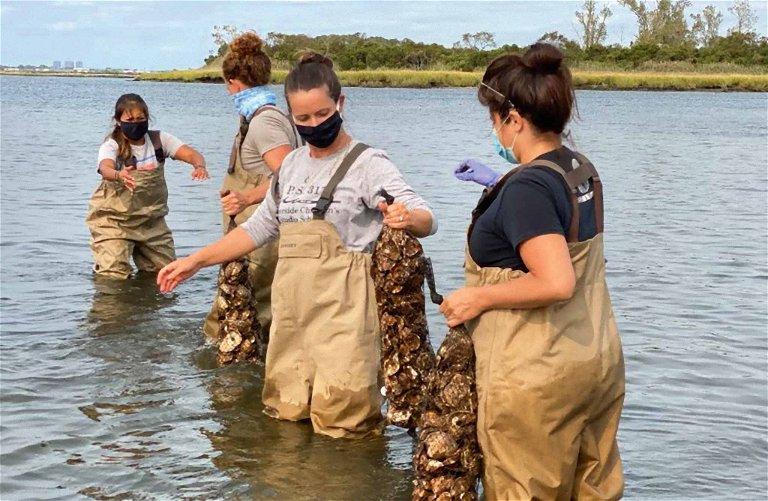
Natural breakwaters
But can oyster reefs actually protect New York's 800 kilometres of coastline from future storms and hurricanes? "The reefs can break the waves before they hit land and thus mitigate damage," says Malinowski. But this works mainly on flat stretches of coastline, such as Jamaica Bay in Brooklyn. "In the lower part of Manhattan, the water is not shallow enough. You would need a huge oyster reef, twelve metres from the bottom," Malinowski explains. But in another section of the project to protect the borough of Staten Island, the farmed reefs already play a role.
For food lovers and environmentalists this initiative is exciting. "When you eat farmed oysters, you are not polluting the environment and you are doing your body good," explains project director Pete Malinowski. Sadly, the newly bred, young oysters off Manhattan are not edible - the water around the metropolis is still simply too dirty, so it will be some time before oyster traders populate the streets of New York again.
Exquisitely sustainable
Oysters score not only as a delicacy, but also as a sustainable source of protein with an eco-bonus, especially in Europe, because unlike North America, where about half of the oysters are still caught in the wild and overfishing is an omnipresent issue, oysters in Europe come almost exclusively from aquaculture.
These are not only environmentally friendly, but they also help clean up the surrounding waters. Moreover, since oyster farming has to be done almost exclusively by hand, it is also more sustainable than other forms of sea farming. Other advantages of oysters over other farmed seafood such as salmon and prawns is that they do not need feeding and they remove excess nitrogen from the water, using it to contruct their shells.




